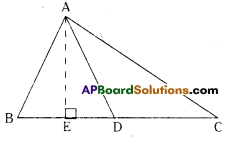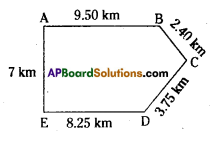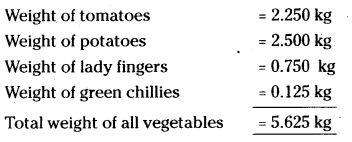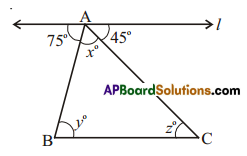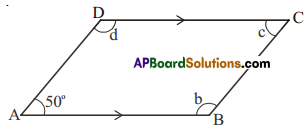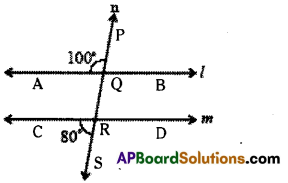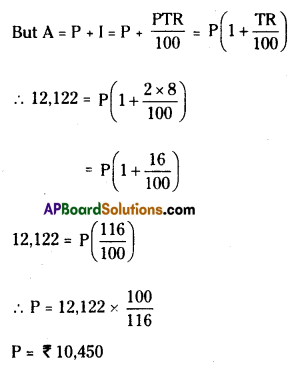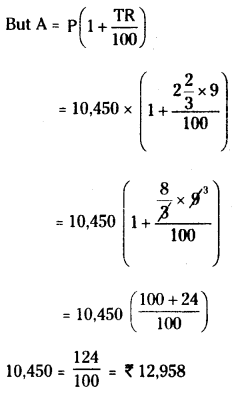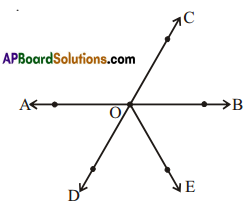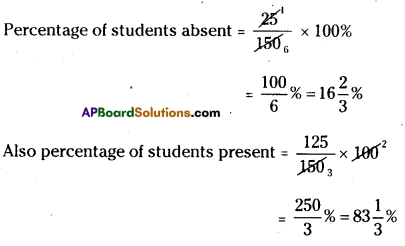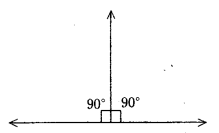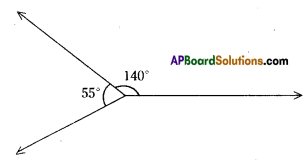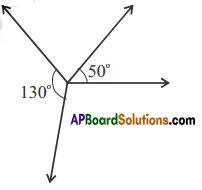AP State Syllabus AP Board 8th Class Hindi Textbook Solutions Chapter 4 कौन? Textbook Questions and Answers.
AP State Syllabus 8th Class Hindi Solutions Chapter 4 कौन?
8th Class Hindi Chapter 4 कौन? Textbook Questions and Answers
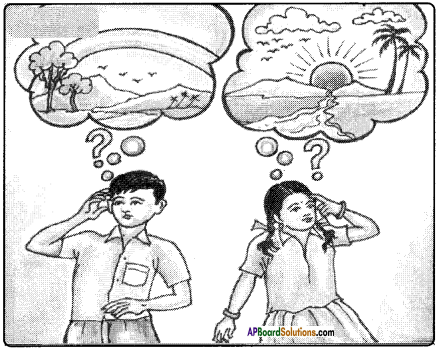
प्रश्न 1.
चित्र में क्या-क्या दिखायी दे रहा है?
उत्तर:
चित्र में एक लडका, लडकी सोचते हुए दिखायी दे रहे हैं। लडके की सोच में पहाड, पेड, पक्षी, इन्द्रधनुष, झरना आदि हैं। लडकी के सोच में पहाड, पेड, सूर्य, झरना, पक्षी आदि हैं।
प्रश्न 2.
वे क्या कर रहे हैं?
उत्तर:
वे सोच रहे हैं।

प्रश्न 3.
वे क्या सोच रहे होंगे?
उत्तर:
लड़का शायद पहाड, पेड़, पक्षी और इंद्रधनुष के बारे में सोच रहा होगा। लड़की पक्षी, पेड, झरने, बादल, पहाड और सूरज आदि प्राकृतिक सौंदर्य के बारे में विचार कर रही होगी।
सुनो – बोलो।
प्रश्न 1.
पाठ में दिये गये चित्रों के बारे में बातचीत करो।
उत्तर:
पाठ “कौन ?’ में चित्र बहुत सुंदर है । प्रश्नवाचक चिह्न में सारे प्राकृतिक चित्र अंकित हैं। इसमें बादल पेड – पौधे, पर्वत उगता सूरज, चमकते चाँद – सितारे, इंद्रधनुष, झरने, फूल आदि दिये गये हैं।
प्रश्न 2.
नदियों से हमें क्या लाभ हैं?
उत्तर:
नदियों से हमें बहुत लाभ हैं। नदियों का पानी खेती के लिए, बहुत लाभदायक है। नदी के पानी को पीने के लिए, कपडे धोने के लिए उपयोग करते हैं। पशु – पक्षी के लिए भी नदियों के पानी बहुत उपयोगी है।
प्रश्न 3.
हरियाली हमारे लिए क्यों ज़रूरी है?
उत्तर:
हमारे पर्यावरण में हिरयाली हो तो समय पर वर्षा होती है । हरियाली पर्यावरण में संतुलन बनाये रखती है। प्रकृति सुंदर लगती है। हरियाली का अर्थ है जीव होना अगर प्रकृति में जीव हो तो जीवों में भी जीव होता है। प्रकृति सूख गई तो जीव जीवित रहना कठिन हो जाता है।

प्रश्न 4.
नदियों को निर्मल क्यों कहा गया होगा?
उत्तर:
नदी हमेशा बहती रहती है। इसलिए नदियों में शुद्ध और निर्मल पानी दिखायी पडता है। इसीलिए नदियों को निर्मल कहा गया होगा।
प्रश्न 5.
कविता का सारांश अपने शब्दों में बताओ।
उत्तर:
प्रकृति का अर्थ है सूरज, चाँद, नदियाँ, पर्वत, झरनें, पेड आदि से भरा हुआ पर्यावरण। इनके बिना हम प्रकृति के बारे में नहीं सोच सकते । प्रस्तुत किवता में कवि श्री बालस्वरूप राही अगर प्रकृति में ये सब न हो तो, किस प्रकार हम हमारे जीवन बिताते ? – इसी के बारे में बताया।
कवि कहते हैं कि अगर चाँद न हो तो हमें रात के समय रास्ता कौन दिखाता ? अगर सूरज न हो तो दिन में सुनहरे किरणों को कौन प्रसारित करता? अगर निर्मल अर्थात स्वच्छ नदियाँ न होतो जग के सभी प्राणी के प्यास कौन बुझाता? अगर पर्वत न हो तो झरने मीठे पानी लेकर कहाँ बहते ? अर्थात मीठे पानी के झरने नहीं होते ।
अगर पेड न हो तो पर्यावरण में हरियाली नहीं होती अर्थात हरियाली को फैलाने वाले पेड नहीं होते। फूलों का खिलना मुस्कुराहट की तरह होती हैं। अगर फूल न हो तो खिल – खिलकर मुस्काने वाले ‘कोई नहीं होते।
इन्द्रधनुष बहुत सुंदर होती है। वर्षा के दो पर सूरज की किरणें पड़ने से यह आकाश में आविर्भाव होती है। अगर बादल न हो तो इन्द्रधनुष को कौन रच पाता? अंत में कवि कहते हैं कि अगर हम न होते तो ये प्रश्न पूछने वाले भी नहीं होते।
पढ़ो
अ) कविता में तुम्हें कौनसी पंक्तियाँ अच्छी लगी? पढ़कर सुनाओ ।
उत्तर:
कविता में मुझे ये पंक्तियाँ अच्छी लगी कि
1. अगर न होती निर्मल नदियाँ जग की प्यास बुझाता कौन?
2. अगर न हो तो बादल नभ में इंद्रधनुष रच पाता कौन?
आ) नीचे दिये गये शब्द कविता में ढूँढकर रेखांकित करो –

उत्तर:
1. अगर न होता चाँद रात में
हमको दिशा दिखाता कौन?
अगर न होता सूरज, दिन को
सोने-सा चमकाता कौन?
2. अगर न होती निर्मल नदियाँ
जग की प्यास बुझाता कौन?
अगर न होते पर्वत, मीठे
झरने भला बहाता कौन?
3. अगर न होते पेड़ भला फिर
हरियाली फैलाता कौन?
अगर न होते फूल बताओ
खिल-खिलकर मुसकाता कौन?
4. अगर न होते बादल नभ में
इंद्रधनुष रच पाता कौन?
अगर न होते हम तो बोलो
ये सब प्रश्न उठाता कौन?

इ) 1. कविता में ‘कौन’ किन – किन के लिए प्रयोग किया गया है? उन वाक्यों को ढूंढकर अपनी उत्तर – पुस्तिका में लिखो।
उत्तर:
‘चाँद’ : रात में दिशा दिखाने के लिए।
‘सूरज’ : दिन को सोने-सा चमकाने के लिए
‘निर्मल नदियाँ’ : जग की प्यास बुझाने के लिए
‘पर्वत’ : मीठे झरने बहाने के लिए
‘पेड’ : हरियाली फैलाने के लिए
‘फूल’ : खिल-खिल कर मुस्काने के लिए
‘बादल’ : इंद्रधनुष रच पाने के लिए
‘हम’ : सभी प्रश्न उठाने के लिए प्रयोग किया गया है।

2. नीचे दी गयी पंक्तियों का सही क्रम पहचानो । अपनी उत्तर – पुस्तिका में लिखो।
अ) जग की प्यास बुझाता कौन?
आ) अगर न होते पर्वत, मीठे |
इ) अगर न होती निर्मल नदियाँ
ई) झरने भला बहाता कौन?
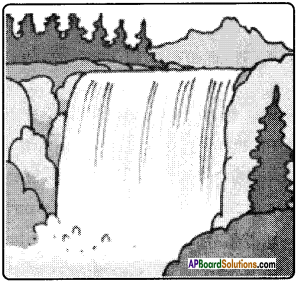
उत्तर:
अ) अगर न होती निर्मल नदियाँ
आ) जग की प्यास बुझाता कौन?
इ) अगर न होते पर्वत, मीठे
ई) झरने भला बहाता कौन?
3. नीचे दी गयी कविता की पंक्तियाँ पढ़ो।
उत्तर:
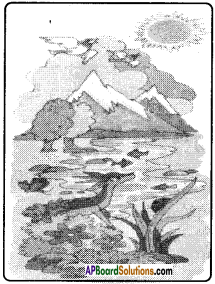
जागो, जागो हुआ सवेरा,
नहीं रहा अब कहीं अंधेरा।
चिड़ियाँ मीठे गीत सुनाती,
उठो, उठो कह हमें जगाती ।
किरणें कहती हुआ सवेरा,
नहीं रहा अब कहीं अंधेरा।
अब इन प्रश्नों के उत्तर दो।
अ) सवेरा होने पर क्या नहीं रहता है?
उत्तर:
सवेरा होने पर अंधेरा नहीं रहता है।
आ) किरणें हमसे क्या कहती हैं?
उत्तर:
किरणें हम से कहती हैं कि सवेरा हुआ है। अब अंधेरा कहीं नहीं है।
इ) हम कब जागते हैं?
उत्तर:
जब चिड़िया हमें मीठे गीत सुनाती और उठो – उठो कहकर हमें जगाती तब हम जागते हैं।
ई) कविता में से ढूँढकर लिखो ।
प्रश्न 1.
सोने के जैसा कौन चमकता है?
उत्तर:
सोने के जैसा दिन चमकता है।
प्रश्न 2.
फूल कैसे मुसकाते हैं?
उत्तर:
फूल खिल -खिलकर मुसकाते हैं।
प्रश्न 3.
जग की प्यास कैसे बुझती है?
उत्तर:
निर्मल नदियों के पानी से जग की प्यास बुझती है।
लिखो
अ) नीचे दिये गये प्रश्नों के उत्तर लिखो।
प्रश्न 1.
सूरज के बारे में दो वाक्य लिखो।
उत्तर:
सूरज स्वयं जागकर संसार को जगाने वाला है। दिन को सोने जैसा चमकाने वाला है।
प्रश्न 2.
पेडों से हमें क्या लाभ हैं?
(या)
मानव जाति को पेड़ों से क्या लाभ है? लिखिए।
उत्तर:
पेडों से हमें कई लाभ हैं । पेड हमें छाया देते हैं। फल देते हैं। पेडों के कारण पर्यावरण में (हवा में) प्राण वायु की प्रतिशत बढ़ती है। पेडों के कारण ऋतुएँ समय पर आते हैं। वर्षा समय पर होती है । पृथ्वी को गर्मी से बचा सकते हैं। इसलिये कहा जाता है कि “वृक्षो रक्षति रक्षितः”, अर्थात हम वृक्षों की रक्षा करें तो वे हमारी रक्षा करते हैं।
प्रश्न 3.
पर्वत हमारी सहायता कैसे करते हैं?
उत्तर:
पर्वत हमारी सहायता इस प्रकार करते हैं :
- पर्वत हमारे देश की रक्षा करते हैं। पर्वत पर हरियाली ज्यादा रहती है।
- पर्वतों से झरने झरते हैं। इनसे लोगों को मीठा पानी मिलता है।
- ये पर्वत बादलों को रोककर सही समय पर बारिश देते हैं।

आ) कविता का सारांश अपने शब्दों में लिखो |
(या)
“बाल स्वरूप राही’ द्वारा रचित “कौन” कविता पाठ का सारांश अपने शब्दों में लिखिए।
उत्तर:
कवि श्री बालस्वरूप राही अपनी कविता में अगर प्रकृति में सूरज, चाँद, पर्वत, पेड, झरने आदि न होने से क्या होता है?, मानव जीवन इनके बिना कैसी होती है? आदि के बारे में बताया हैं।
कवि कहते हैं कि अगर चाँद न हो तो हमें रात के समय रास्ता कौन दिखाता? अगर सूरज न हो तो दिन में सुनहरे किरणों को कौन प्रसारित करता? अगर निर्मल अर्थात स्वच्छ जल के नदियाँ न हो तो जग में सभी प्राणियों का प्यास कौन बुझाते? अगर पर्वत न हो तो झरनें मीठे पानी लेकर कहाँ बहते? अर्थात मीठे पानी के झरनें नहीं दीख पडते ।
अगर पेड न हो तो पर्यावरण में हरियाली नहीं होती अर्थात हरियाली को फैलाने वाले पेड नहीं होते। अगर फूल न हो तो खिल -खिलकर मुस्काने वाले कौन होते? इन्द्रधनुष बहुत सुंदर होती है। वर्षा के बूंदों पर सूरज के किरणें पड़ने से इन्द्रधनुष आकाश में प्रत्यक्ष होती है। अगर बादल न हो तो इन्द्रधनुष को कौन रचाता? अंत में कवि कहते हैं कि अगर हम न होते तो ये प्रश्न पूछने वाले भी नहीं होते।
शब्द भंडार
अ) जो भिन्न है, उसे कोष्टक में लिखो।

आ) नीचे दिये गये शब्द तालिका में सही स्थान पर लिखो।

| धरती |
आसमान |
| जैसे – 1. पेड |
1. सूरज |
| 2. नदी |
2. चाँद |
| 3. घर |
3. तारा |
| 4. पर्वत |
4. बादल |
| 5. सडक |
5. इंद्रधनुष |
इ) नीचे दी गयी तालिका में कविता के कुछ शब्द छिपे हुए हैं। उन्हें ढूंढ़कर वाक्य प्रयोग करो।
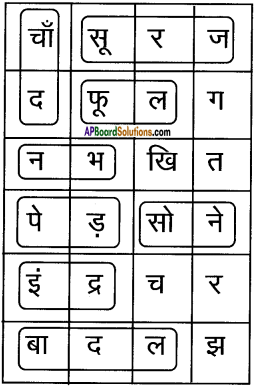
1. सूरज संसार को जगाता है।
2. बगीचे में कई तरह के फूल हैं।
3. संध्या के समय सूरज सोने जैसे चमकता है।
4. हमारे यहाँ पेड़ को लगाना पुण्य कार्य मानते हैं।
5. आकाश में काले बादल छाये हुए हैं।
6. चाँद को शशि भी कहते हैं।
7. नभ में तारे चमकते हैं।
सृजनात्मक अभिव्यक्ति
अ) कविता में चाँद, सूरज, नदी, पर्वत, झरना, पेड, फूल , नभ, इंद्रधनुष आदि के बारे में उल्लेख हुआ है। अब तुम किसान, अध्यापक, डॉक्टर, डाकिया आदि शब्द के द्वारा कविता आगे बढाओ।
अगर न होते किसान,
बताओ फसल उगाता कौन?
अगर न होते अध्यापक,
बताओ ज्ञान फैलाता कौन? |
उत्तर:
अगर न होते डॉक्टर
बताओ इलाज करता कौन?
अगर न होते डाकिया
बताओ चिट्ठी लाता कौन?
प्रशंसा
हमारे जीवन में वृक्षों का क्या महत्व है?
उत्तर:
हमारे जीवन में वृक्षों का बड़ा महत्व है।
- वृक्ष हमें छाया देते हैं।
- वृक्ष हरियाली फैलाते हैं।
- वृक्ष वातावरण में संतुलन बनाये रखते हैं।
- वृक्ष हमें प्राणवायु देते हैं।
- वृक्ष फूल ओर फल देते हैं।
- वृक्ष वर्षा देते हैं।
- वृक्ष जब सूख जाते हैं, तब ईंधन के रूप में काम में आते हैं।
- सूखे वृक्षों की लकडी से हम कई वस्तुएँ बना सकेंगे।
परियोजना कार्य
इंद्रधनुष का चित्र उतारो और बताओ कि हमारे जीवन में रंगों का क्या महत्व है?
उत्तर:

हमारे जीवन में रंगों का बड़ा महत्व है। इन्द्रधनुष में सात रंग होते हैं। वे हैं – नारंगी, लाल, हरा, पीला, बैंगनी, आसमानी, नीला। ये सभी रंग हमारे जीवन के एक – एक भावना के प्रतीक हैं। ये सभी रंग सफेद रंग के मेल से ही बनते हैं। हमारे जीवन में सभी रंग अपना प्रभाव दिखाते हैं। यह इन्द्रधनुष सात रंगों का विचित्र और अद्भुत मेल है। हमारे जीवन में जो भावनाएँ हैं जैसे सुख, दुःख, आशा, निराशा, क्रोध, शांत, प्रेम आदि पर इन रंगों का बड़ा प्रभाव होता है।
भाषा की बात
नीचे दी गयी पंक्तियाँ पढ़ो ।
अगर न होती निर्मल नदियाँ
जग की प्यास बुझाता कौन?
अगर न होते पर्वत, मीठे
झरने भला बहाता कौन?
1. …………….. सूरज
2. …………….. चाँद
3. …………….. फूल
4. …………….. आसमान
5. …………….. इंद्रधनुष
ऊपर दी गयी कविता की पंक्तियों में रेखांकित शब्द नदियों और झरने की विशेषता बताने के लिए उपयोग में लाये गये हैं। ऐसे शब्दों को ‘विशेषण’ कहते हैं। अब नीचे दिये गये संज्ञा शब्दों के लिए उपयुक्त विशेषण शब्द सोचकर लिखो।
उत्तर:
- भडकता
- सुंदर
- खिले
- विशाल
- मन लुभाता
कौन? Summary in English
The poet Sri Balaswaroop Rahi discuss the following in his poem ‘Who?
What will happen if there are no sun, moon, mountains, trees, brooks, and the like in nature? How will human life be without all these?
The poet questions if there is no moon, who will show us the way during night time. If there is no sun, who will transmit golden rays during day time. If there are no rivers containing pure water, who will quench the thirst of living beings in the world. If there are no mountains, where are the brooks with sweet water found?
If there are no trees there will be no greenery in the environment. If there are no flowers, who will smile sweetly? The rainbow is beautiful to look at. It is formed across the sky when the sun’s rays fall on the raindrops. If there are no clouds, who will create the rainbow?
Finally, the poet says that there will no one to ask questions if we do not exist.
अर्थग्राहयता - प्रतिक्रिया
I. निम्नलिखित पद्यांश पढ़कर दिये गये प्रश्नों के उत्तर एक वाक्य में लिखिए।
1. अगर न होती निर्मल नदियाँ
जग की प्यास बुझाता कौन?
अगर न होते पर्वत, मीठे
झरने भला बहाता कौन?
प्रश्न :
1. नदियाँ कैसी हैं?
उत्तर:
नदियाँ निर्मल हैं।
2. जग की प्यास कौन बुझाता हैं?
उत्तर:
नदियाँ जग का प्यास बुझाती हैं।
3. झरने कहाँ से बहते हैं?
उत्तर:
झरने पर्वतों से बहते हैं।
4. ’जग’ का अर्थ क्या है?
उत्तर:
जग = दुनिया
5. यह कवितांश किस पाठ से दिया गया है?
उत्तर:
यह कवितांश ”कौन” पाठ से दिया गया है।

2. अगर न होती निर्मल नदियाँ
जग की प्यास बुझाता कौन?
अगर न होते पर्वत, मीठे
झरने भला बहाता कौन?
प्रश्न :
1. नदियाँ कैसी होती हैं?
उत्तर:
नदियाँ निर्मल होती हैं।
2. जग की प्यास कौन बुझाता है?
उत्तर:
नदियाँ जग की प्यास बुझाती है।
3. पर्वतों से क्या बहते हैं?
उत्तर:
पर्वतों से मीठे झरने बहते हैं।
4. जग का अर्थ क्या है?
उत्तर:
जग = दुनिया
5. यह पद्यांश किस कविता से दिया गया है?
उत्तर:
यह पद्यांश ”कौन” कविता से दिया गया है।

2. निम्न लिखित पद्यांश पढ़कर नीचे दिये गये वैकल्पिक प्रश्नों के उत्तर दीजिए। सही विकल्प से संबंधित अक्षर चुनकर कोष्ठक में रखिए।
1. पेडों की छाया में ही तो
पक्षियों का रैन बसेरा
फूल, फल हवा सुगंध
ये सब देते रहते हैं
स्वच्छ वायु और वर्षा के दाता
पेड़ हमारे भाग्य विधाता
हर एक को पेड़ लगाना
धरती को स्वर्ग बनाना।
प्रश्न :
1. पक्षियों का बसेरा कहाँ है?
A) घर की छाया में
B) पेडों की छाया में
C) माता - पिता की छाया में
D) धरती की छाया में
उत्तर:
B) पेडों की छाया में
2. स्वच्छ वायु किससे मिलती है?
A) पेड
B) फल
C) वर्षा
D) हवा
उत्तर:
A) पेड
3. हर एक को क्या करना चाहिए?
A) घर बनाना
B) पानी बहाना
C) पेड़ लगाना
D) गाना गाना
उत्तर:
C) पेड़ लगाना
4. ”स्वर्ग’ का विलोम शब्द पहचानिए।
A) नरक
B) कारक
C) चरक
D) पूरक
उत्तर:
A) नरक
5. पेड़ हमें क्या देते हैं?
A) धूल
B) स्वच्छ वायु
C) बिजली
D) बीमारी
उत्तर:
B) स्वच्छ वायु

2. सूरज निकला चिड़िया बोली,
कलियों ने भी आँखें खोली,
आसमान में छायी लाली
हवा बही सुख देनेवाली।
प्रश्न :
1. किसके निकलने पर चिड़िया बोली?
A) चाँद
B) सूरज
C) तारे
D) बादल
उत्तर:
B) सूरज
2. किसके आँखें खोली?
A) कलियाँ
B) चिडिया
C) माली
D) लता
उत्तर:
A) कलियाँ
3. लाली कहाँ छायी?
A) फूल पर
B) पत्ते पर
C) आसमान में
D) भूमि पर
उत्तर:
C) आसमान में
4. आसमान शब्द का पर्यायवाची शब्द क्या है?
A) बादल
B) छाया
C) तारे
D) गगन
उत्तर:
D) गगन
5. सुख देने वाली कौन है?
A) हवा
B) बोली
C) कली
D) छाया
उत्तर:
A) हवा
अर्थग्राह्यता - प्रतिक्रिया
पठित- पद्यांश
नीचे दिये गये पद्यांश को पढ़कर प्रश्नों के उत्तर एक वाक्य में लिखिए।
1. अगर न होता चाँद रात में
हमको दिशा दिखाता कौन?
अगर न होता सूरज, दिन को
सोने-सा चमकाता कौन?
अगर न होती निर्मल नदियाँ
जग की प्यास बुझाता कौन?
अगर न होते पर्वत, मीठे
झरने भला बहाता कौन?
प्रश्न :
1. हम को रात में दिशा दिखानेवाला कौन है?
उत्तर:
हम को रात में दिशा दिखाने वाला ”चाँद” है।
(या)
चाँद हम को रात में दिशा दिखानेवाला है।
2. दिन को सोने सा चमकानेवाला कौन है?
उत्तर:
दिन को सोने सा चमकाने वाला सूरज है।
(या)
सूरज दिन को सोने सा चमकाने वाला है।
3. जग की प्यास कौन बुझाता है?
उत्तर:
निर्मल नदियाँ जग की प्यास बुझाती हैं।
4. मीठे झरने बहानेवाला कौन है?
उत्तर:
पर्वत मीठे झरने बहानेवाला है।
5. उपर्युक्त पद्यांश किस पाठ से लिया गया है?
उत्तर:
यह पद्यांश ”कौन?” पाठ से लिया गया है।

2. अगर न होते पेड़ भला फिर
हरियाली फैलाता कौन?
अगर न होते फूल बताओ
खिल-खिलकर मुसकाता कौन?
अगर न होते बादल नभ में
इंद्रधनुष रच पाता कौन?
अगर न होते हम तो बोलो
ये सब प्रश्न उठाता कौन?
प्रश्न :
1. खिल - खिलकर मुस्काने वाला कौन है?
उत्तर:
खिल - खिलकर मुस्काने वाला फूल है।
2. हरियाली फैलाने वाला कौन है?
उत्तर:
हरियाली फैलानेवाला पेड़ है।
3. इंद्रधनुष को कौन रचपाता है?
उत्तर:
इंद्रधनुष को बादल रचपाता है।
4. इन सब प्रश्नों को उठानेवाले कौन हैं?
उत्तर:
इन सब प्रश्नों को उठानेवाले हम हैं।
5. मुस्काना शब्द का अर्थ क्या है?
उत्तर:
मुस्काना शब्द का अर्थ है ”हँसना”|
अपठित- पद्यांश
निम्न लिखित पद्यांश पढ़कर दिये गये प्रश्नों के उत्तर विकल्पों में से चुनकर लिखिए।
1. सामने से हठ अधिक न बोल
द्विजिहब रस में विष मत घोल।
उडाता है तू घर में कीच
नीच ही होते हैं बस नीच।
प्रश्न :
1. कहाँ से हठना है?
A) नीचे से
B) सामने से
C) पीछे से
D) ऊपर से
उत्तर:
B) सामने से
2. कैसे बोल न बोलना है?
A) अधिक
B) कुछ
C) बुरे
D) मीठे
उत्तर:
A) अधिक
3. द्विजिह्वा रस में किसे मत घोलना है?
A) पानी को
B) अमृत को
C) विष को
D) रस को
उत्तर:
C) विष को
4. नीच कैसे होते हैं?
A) अच्छे
B) विद्वान
C) कीच
D) नीच
उत्तर:
C) कीच
5. विष शब्द का पर्याय लिखिए।
A) ज़हर
B) अमृत
C) पीयुष
D) रस
उत्तर:
A) ज़हर

2. चित्रा ने अर्जुन को पाया।
शिव से मिली भवानी थी।
बुंदेले हरबोलों के मुँह
हमने सुनी कहानी थी॥
प्रश्न :
1. चित्रा ने किसे पाया?
A) शिव को
B) अर्जुन को
C) भवानी को
D) हरबोलों को
उत्तर:
B) अर्जुन को
2. भवानी किससे मिली थी?
A) शिव से
B) अर्जुन से
C) चित्रा से
D) राम से
उत्तर:
A) शिव से
3. हम ने कहानी किनके मुँह से सुनी?
A) हरबोलों के
B) चित्रा के
C) अर्जुन के
D) शिव के
उत्तर:
A) हरबोलों के
4. कहानी शब्द का वचन बदलिए।
A) कहानी
B) कहानियाँ
C) कहानीयाँ
D) कहानिएँ
उत्तर:
B) कहानियाँ
5. कहानी शब्द का पर्यायवाची शब्द
A) नाटक
B) कथा
C) कथन
D) एकांकी
उत्तर:
B) कथा

3. फूल - फूल के कानों में तुम
जा - जाकर क्या कहती हो?
इतनी बात बता दो हमको
पास नहीं क्यों आती हो ?
पास नहीं क्यों आती, तितली
दूर - दूर क्यों रहती हो ?
फूल - फूल का रस लेती हो,
हम से क्यों शरमाती हो ?
प्रश्न :
1. हमारे पास क्या नहीं आती?
A) तितली
B) फूल
C) कली
D) पेड
उत्तर:
A) तितली
2. फूल - फूल के कानों में जा - जाकर कौन कुछ कहती है?
A) भौरा
B) मक्खी
C) तितली
D) मच्छर
उत्तर:
C) तितली
3. फूल - फूल का रस लेनेवाली क्या है?
A) बर्फ
B) चाँद
C) पेड
D) तितली
उत्तर:
D) तितली
4. हम से कौन शरमाती है?
A) फूल
B) पेड
C) तितली
D) पुष्प
उत्तर:
C) तितली
5. फूल शब्द का पर्याय लिखिए।
A) पुष्प
B) अंजलि
C) जल
D) वारि
उत्तर:
A) पुष्प

4. युग - युग तक चलती रहे कठोर कहानी
रघु कुल में भी थी एक अभागिन रानी।
निज जन्म - जन्म से सुने जीव यह मेरा -
धिक्कार ! उसे था महा स्वार्थ ने घेरा ॥
प्रश्न :
1. युग - युग तक कैसी कहानी चलती रही ?
A) सरल
B) कठोर
C) मधुर
D) विवेक
उत्तर:
B) कठोर
2. एक अभागिन रानी किस कुल में भी थी?
A) रघु कुल
B) सूर्य कुल
C) चंद्र कुल
D) राणा कुल
उत्तर:
A) रघु कुल
3. कहानी कब तक चलती रहे?
A) युग - युग तक
B) युगांत तक
C) प्रलय तक
D) कल तक
उत्तर:
A) युग - युग तक
4. जन्म शब्द का विलोम शब्द क्या है?
A) जनन
B) संस्कार
C) मृत्यु
D) आविष्कार
उत्तर:
C) मृत्यु
5. इस पद्य में किस कुल का प्रस्ताव आया?
A) रघु कुल
B) चंद्र कुल
C) सूर्य कुल
D) रवि कुल
उत्तर:
A) रघु कुल

5. चरण - कमल बंदी हरि राई।।
जाकी कृपा पंगु गिरि लंघे, अंधे को सब कुछ दरसाई॥
बहिरौ सुनै मूक पनिबोले, रंक चलै सिर छत्र
धराई। सूरदास स्वामी करुणामय, बार - बार बन्दौ तेहि पाई॥
प्रश्न :
1. कमल जैसा चरण वाला कौन है?
A) ब्रह्मा
B) शिव
C) हरि
D) कोई नहीं
उत्तर:
C) हरि
2. सूरदास का स्वामी ऐसा है
A) कठोर
B) निष्ठुर
C) निर्दयी
D) करुणामय
उत्तर:
D) करुणामय
3. जाकी कृपा …………. गिरि लंधै।
A) अंधा
B) पंगु
C) रंक
D) बहिरो
उत्तर:
B) पंगु
4. भगवान कृष्ण की कृपा से मूक क्या कर सकता है?
A) बोल
B) सुन
C) देख
D) चढ़
उत्तर:
A) बोल
5. ”बंदौ” शब्द का अर्थ क्या है?
A) स्मरण
B) वंदन
C) भजन
D) कीर्तन
उत्तर:
B) वंदन
![]()
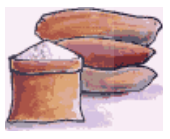
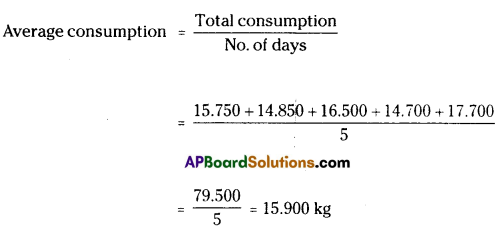
![]()
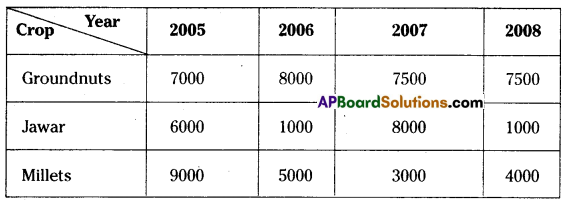


![]()

![]()
![]()
![]()








